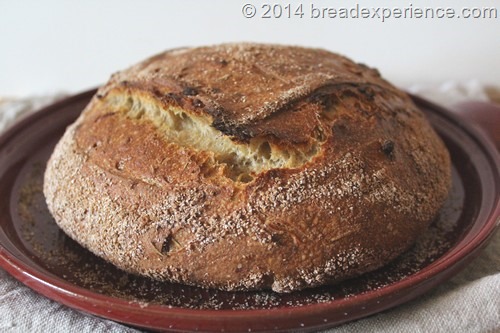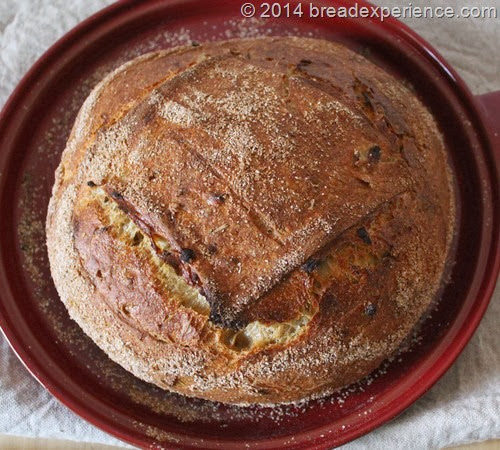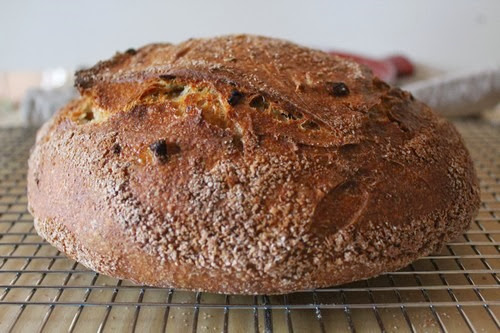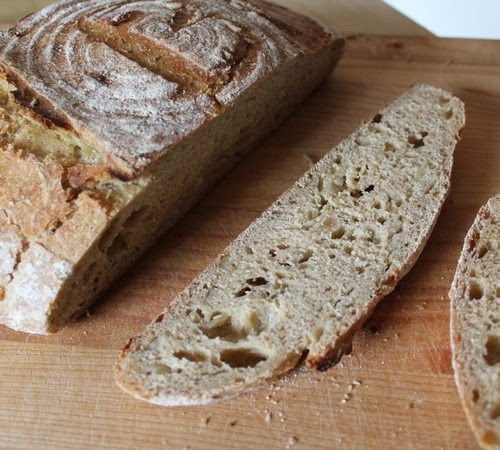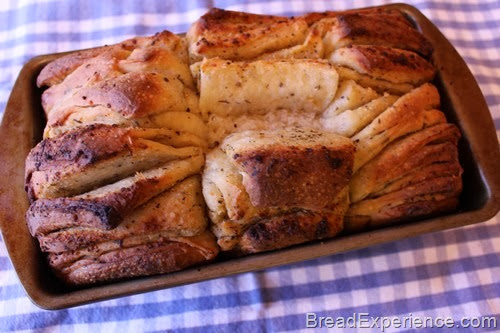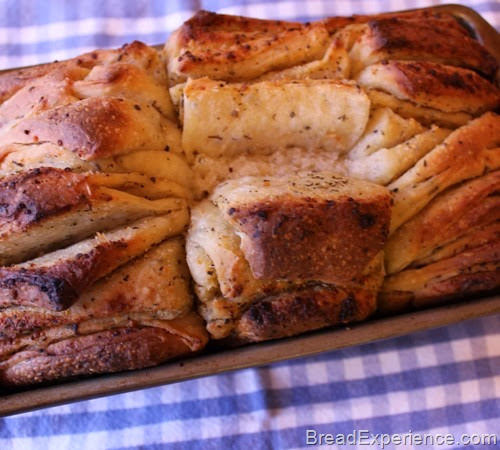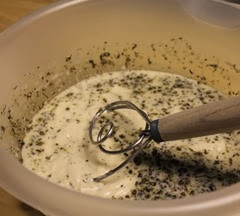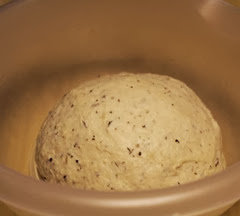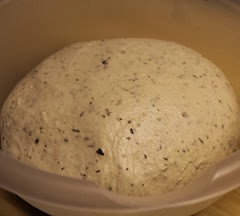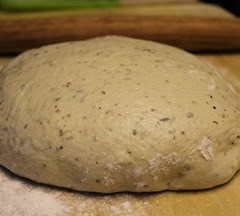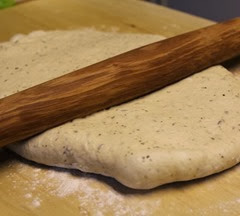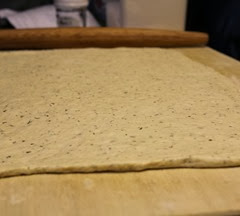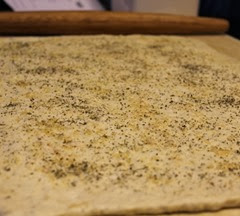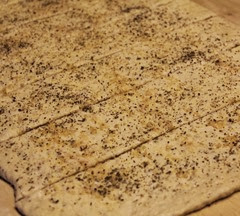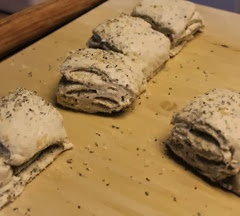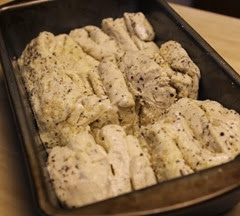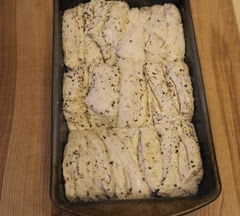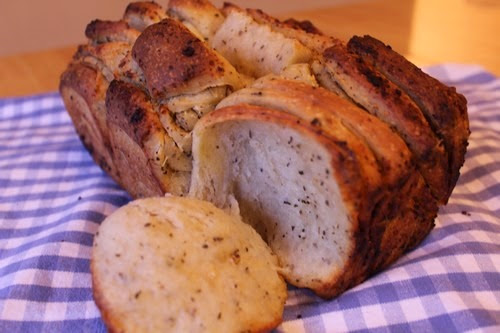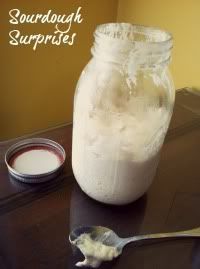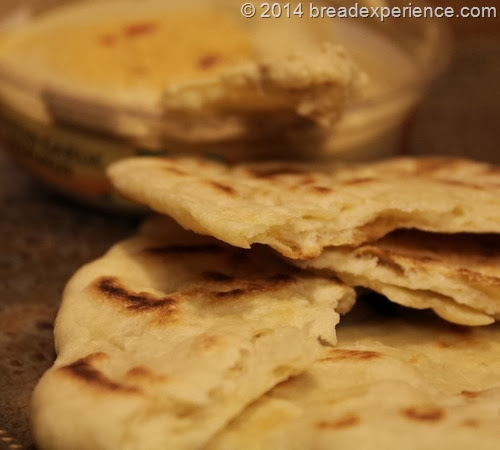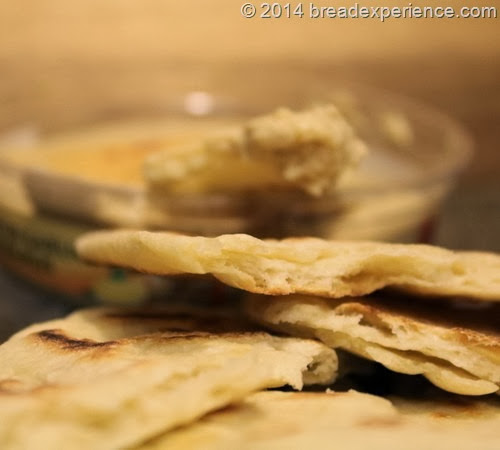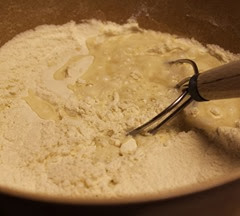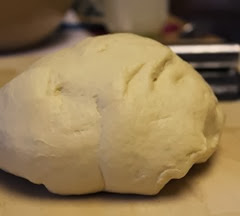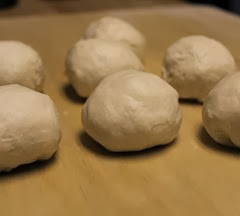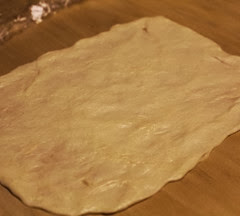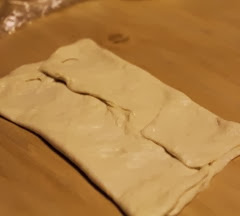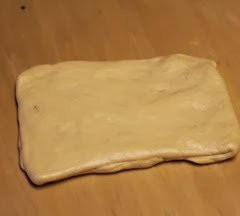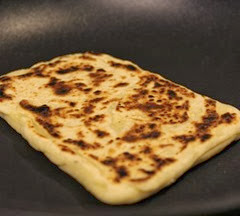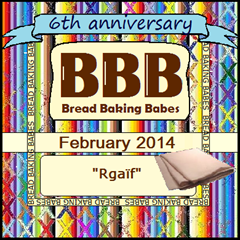My love affair with einkorn continues …. with Einkorn & Spelt Pain au Levain with Caramelized Onions and Rosemary.
Over the past few months, I’ve been baking with spelt and KAMUT so einkorn got put on the back burner. Every time I would reach in the freezer to pull out one of the other ancient grains, the container of milled einkorn would beckon to me as if to say “what about me?”
I finally gave in this past weekend and used some of the milled flour to make the BOM for the Artisan Bread Bakers FB group. However, einkorn is not the only grain in this bread. It shares center stage with Spelt.
Making this bread was an experiment in a number of ways; from the grains I used, to the photos, to the fermentation process, and finally the baking process.
I used einkorn sourdough and all-purpose spelt flour to make the levain build and then mixed the levain with 80% extraction einkorn flour, sifted whole grain einkorn flour, all-purpose spelt flour and unsifted whole grain einkorn to make the final dough.
I also played around with the photos because I actually had sun shining through the windows in my kitchen this weekend. Oh what a lovely sight! I took as many photos as I could in natural light but ran out of it so you’ll see a mixture of light in the photos below.
I didn’t intend to try different fermentation methods for each loaf, but the second loaf stuck to the proofing basket so I had to reshape it and retard it in the refrigerator overnight.
My final test was baking one loaf in a preheated Emile Henry Bread Baker and the other loaf in a cold baker in a preheated oven. The loaf in the photo below is the one that was retarded in the refrigerator overnight and baked in the preheated ceramic baker. It had better oven spring than the loaf that was proofed and baked the same day in the cold baker.
Einkorn & Spelt Pain au Levain with Caramelized Onions
Adapted from: Pain au Levain with Caramelized Onions from David of HearthBakedTunes
Makes: 2 Loaves
Levain Build:
- All purpose Spelt flour 227g
- Water 227 g
- Starter 100% hydrated; 45g (I used this Einkorn Starter)
Mix the spelt flour, water and sourdough starter and let it sit at room temperature for at least 8 hours. I started the levain Friday night and let it rest for about 12 hours until mid-morning on Saturday.
Final dough:
- Water 372g + 35g (add with the salt)
- Build 454g
- All purpose spelt 227g
- 80% extraction einkorn flour 135g
- Whole grain einkorn flour, sifted once 195g
- Whole grain einkorn flour, unsifted 228g
- salt 15g*
- caramelized onions 226g (~1 medium onion)
- 2 –3 tablespoons dried rosemary, or to taste
*I reduced the amount of salt in the final dough to compensate for the salt added with the caramelized onions.
Caramelized Onions: Coarsely chop 283 grams of onions and toss with olive oil, salt and pepper. Caramelize the onions until translucent. They should be pretty wet, not crispy and dark. Set aside and let the onions cool. Add the onions once the dough is near the end of kneading.
Autolyse: Pour the levain into a large bowl. Add 372g water to the levain mixture and stir to break up the levain. Mix in the flours and dried rosemary, using a wooden spoon, a Danish dough whisk and/or your hands until a shaggy dough is formed. Cover the bowl and allow to rest at room temp for thirty minutes.
Knead in the onions by hand. Sprinkle the salt over the dough and pour in the 35g of water. Mix with your hands until the salt is thoroughly incorporated into the dough.
Bulk fermentation: Transfer the dough to a lightly greased bowl and cover with plastic wrap. Let the dough ferment for 2.25 hours with two folds at 45 minute intervals. Don’t skip the folds because they help the gluten development
Shaping the loaves: Remove the proofed dough from the bowl and divide it into two equal pieces. Preshape the pieces into rounds and let them rest for 15 minutes. Shape the dough into boules and place them in linen lined brotforms or flour dusted brotforms and let them proof for 2 hours.
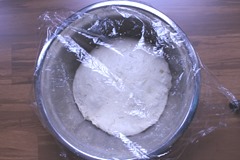 | 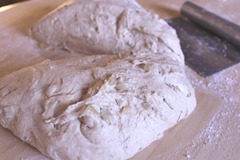 |
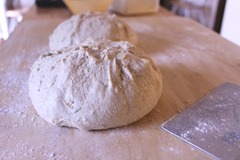 | 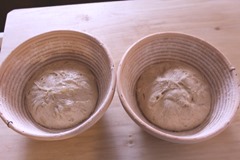 |
Preheat the oven to 450 degrees F.
I baked the loaves one at a time and started with a cold bread baker.
Baking the loaf in a cold Emile Henry Baker in the preheated oven:
Carefully remove the loaf from the proofing basket onto parchment paper. I didn’t want the bread to stick to the bottom of my Emile Henry Bakers so I cut a round piece of parchment to fit the bottom.
Score the loaf using the pattern of your choice. I decided to score a “B” for Bread Experience. I’ll have to add the “E” next time.
You can place the parchment paper in the bottom of the baker before scoring if you like, but I transferred it after I scored it. Then I covered the loaf with the cloche lid and placed it in the preheated oven.
Bake the loaves for 40 minutes. Check the loaves at 30 minutes. Remove the lid from the baker and bake it without the lid for the last 10-15 minutes.
 | 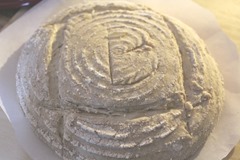 |
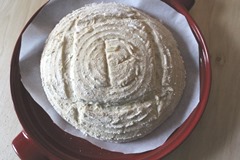 | 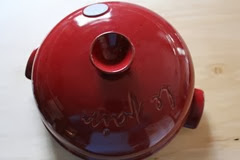 |
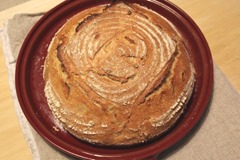 | 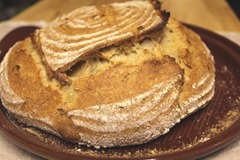 |
2nd Loaf retarded in refrigerator overnight.
Now it was time to bake the 2nd loaf. However, it stuck to the proofing basket so bad I had to reshape it. So I reshaped it into a boule and placed it in a lined proofing basket dusted with einkorn-bran. It was getting late so I chose to retard the dough in the refrigerator overnight.
The next day, I removed the dough from the refrigerator and let it warm up to room temperature.
Baking the loaf in a preheated Emile Henry Baker:
Meanwhile, I preheated the oven to 450 degrees F. with the Emile Henry Baker on the bottom rack for 30 minutes.
This time the dough came out of the basket very easily. I scored it and placed it on the round parchment paper. For this loaf, I used round parchment paper I got from KAF. It looks better than my attempt at making round parchment with scissors.
When the oven and the bread baker were preheated, I used a pizza peel to transfer the the loaf (on the parchment paper) onto the bottom of the ceramic baker. I baked the loaf for 40 minutes, removing the lid for the last 10-15 minutes of baking.
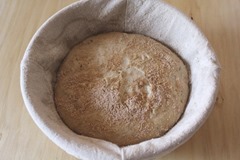 | 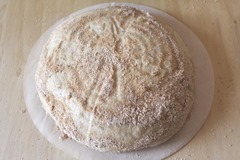 |
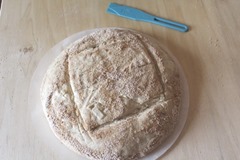 | 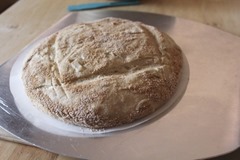 |
Let dough cool completely before slicing.
This is the crumb shot of the first loaf. It had a delicious smell and flavor.
Happy Baking!
Cathy
